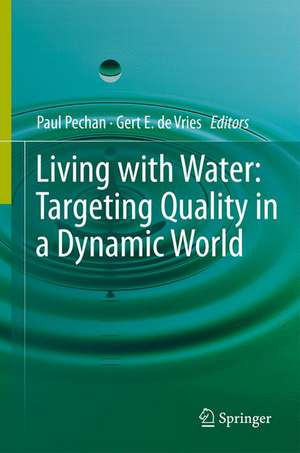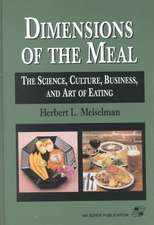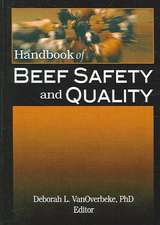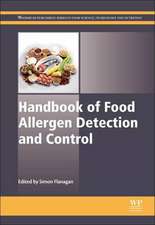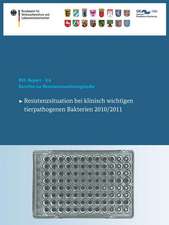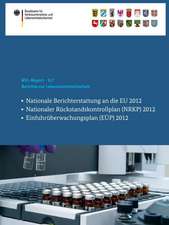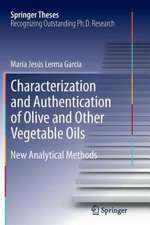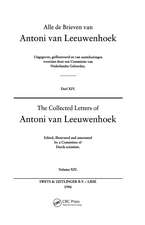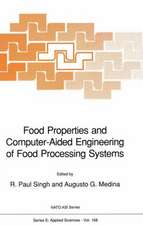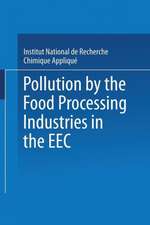Living with Water: Targeting Quality in a Dynamic World
Editat de Paul Pechan, Gert E. de Vriesen Limba Engleză Hardback – 11 dec 2012
Using specific examples, Water Quality and Resource Management will address the many challenges of providing clean water to the growing world population. It will also discuss the new technologies that are being developed, for example, to treat and reuse waste waters, and the innovative monitoring approaches that help scientists to assess water quality risks. Such risk assessments are urgently needed to help draft legislations and allow enforcement to ensure accessability to quality water for all.
The structure of the book will be the following: Each chapter will provide information about a specific water environment and the challenges it faces. This will be followed by discussion of the pollution effects and actions taken to redress the situation. Finally, future trends will be discussed.
| Toate formatele și edițiile | Preț | Express |
|---|---|---|
| Paperback (1) | 636.45 lei 6-8 săpt. | |
| Springer – 28 ian 2015 | 636.45 lei 6-8 săpt. | |
| Hardback (1) | 644.18 lei 6-8 săpt. | |
| Springer – 11 dec 2012 | 644.18 lei 6-8 săpt. |
Preț: 644.18 lei
Preț vechi: 757.85 lei
-15% Nou
Puncte Express: 966
Preț estimativ în valută:
123.28€ • 128.23$ • 101.77£
123.28€ • 128.23$ • 101.77£
Carte tipărită la comandă
Livrare economică 14-28 aprilie
Preluare comenzi: 021 569.72.76
Specificații
ISBN-13: 9781461437512
ISBN-10: 1461437512
Pagini: 216
Ilustrații: XIV, 202 p.
Dimensiuni: 155 x 235 x 16 mm
Greutate: 0.52 kg
Ediția:2013
Editura: Springer
Colecția Springer
Locul publicării:New York, NY, United States
ISBN-10: 1461437512
Pagini: 216
Ilustrații: XIV, 202 p.
Dimensiuni: 155 x 235 x 16 mm
Greutate: 0.52 kg
Ediția:2013
Editura: Springer
Colecția Springer
Locul publicării:New York, NY, United States
Public țintă
Professional/practitionerCuprins
1. Living with Water.- 2. Mountain Waters as Witnesses of Global Pollution.- 3. Wastewaters are not Wastes.- 4. Pollutants in Water: The Case of Pharmaceuticals.- 5. The Oceans and Their Challenge to Conserve Marine Biodiversity.
Notă biografică
Paul Pechan is a researcher at the Department of Communication and Media Research, Ludwig Maximilians University Munich. His background is in plant physiology and molecular biology. Since 2004 he has been involved in communicating science to specific target groups, including the youth. His latest work includes scientific papers on learning (information recall, motivation), books on risks in our environment and food, and a UNESCO teaching manual on GMO issues. He is also actively involved in the production of science films for schools and the public.
Gert E. de Vries received training in molecular genetics and microbiology and received his PhD at Leiden University at the faculty of Life Sciences. He subsequently has been involved in basic research in microbiology and molecular biology at universities in Santa Cruz (CA, USA), Amsterdam, Leiden and Groningen (the Netherlands) covering a period of twenty years. He then changed his career to become involved with science communication and technology transfer while employed for a private company.
Gert E. de Vries received training in molecular genetics and microbiology and received his PhD at Leiden University at the faculty of Life Sciences. He subsequently has been involved in basic research in microbiology and molecular biology at universities in Santa Cruz (CA, USA), Amsterdam, Leiden and Groningen (the Netherlands) covering a period of twenty years. He then changed his career to become involved with science communication and technology transfer while employed for a private company.
Textul de pe ultima copertă
The factors affecting water quality are many: the increasing buying power and health concerns of the world population contribute to the creation of new products, whose production and disposal lead to the release of chemicals harmful to the environment; the ever-growing world population requires a steady food supply, which increases the pressure to use even more fertilizers and agrochemicals to support crops and control various pests; and due to climate change, water quality is rapidly changing (e.g., oceans are becoming increasingly warmer and acidic).
Using specific examples, Living With Water will address the many challenges of providing clean water to the growing world population. It will also discuss the new technologies that are being developed, for example, to treat and reuse waste waters, and monitoring approaches that help scientists and stakeholders to assess water quality risks. Such risk assessments are urgently needed to help draft legislations and allow enforcement to ensure accessibility to quality water for all.
The structure of the book will be the following: each chapter will provide information about a specific water environment (headwaters, rivers, oceans) and the challenges it faces. This will be followed by discussion of the pollution effects and actions taken to redress the situation. Finally, future trends will be discussed.
Using specific examples, Living With Water will address the many challenges of providing clean water to the growing world population. It will also discuss the new technologies that are being developed, for example, to treat and reuse waste waters, and monitoring approaches that help scientists and stakeholders to assess water quality risks. Such risk assessments are urgently needed to help draft legislations and allow enforcement to ensure accessibility to quality water for all.
The structure of the book will be the following: each chapter will provide information about a specific water environment (headwaters, rivers, oceans) and the challenges it faces. This will be followed by discussion of the pollution effects and actions taken to redress the situation. Finally, future trends will be discussed.
Caracteristici
Provides information about specific water environments and the challenges they each face Discusses the effects of pollution and actions being taken to redress the situation Details the new technologies being developed to treat and reuse waste waters, and the innovative monitoring approaches that help scientists to assess water quality risks
